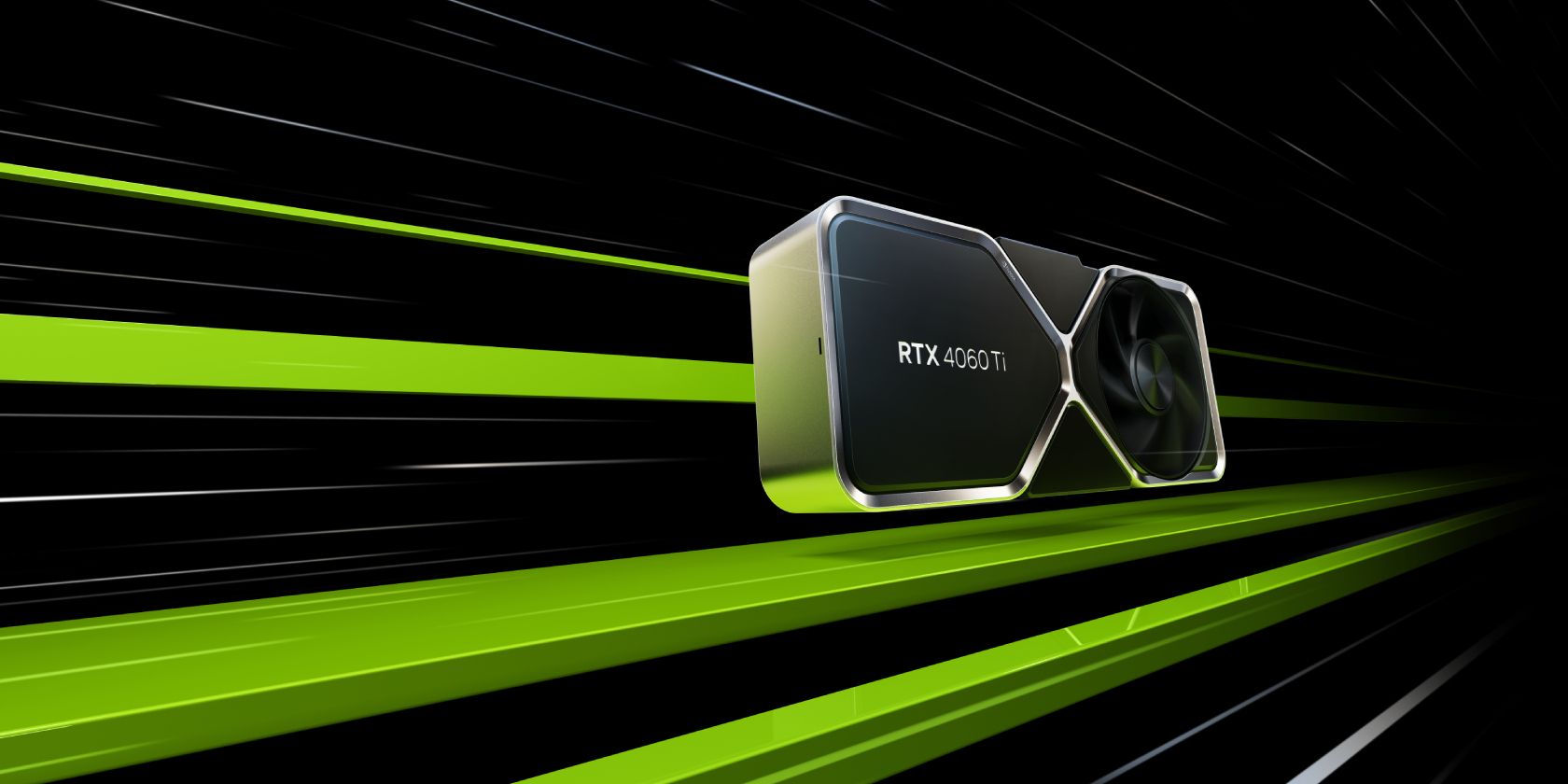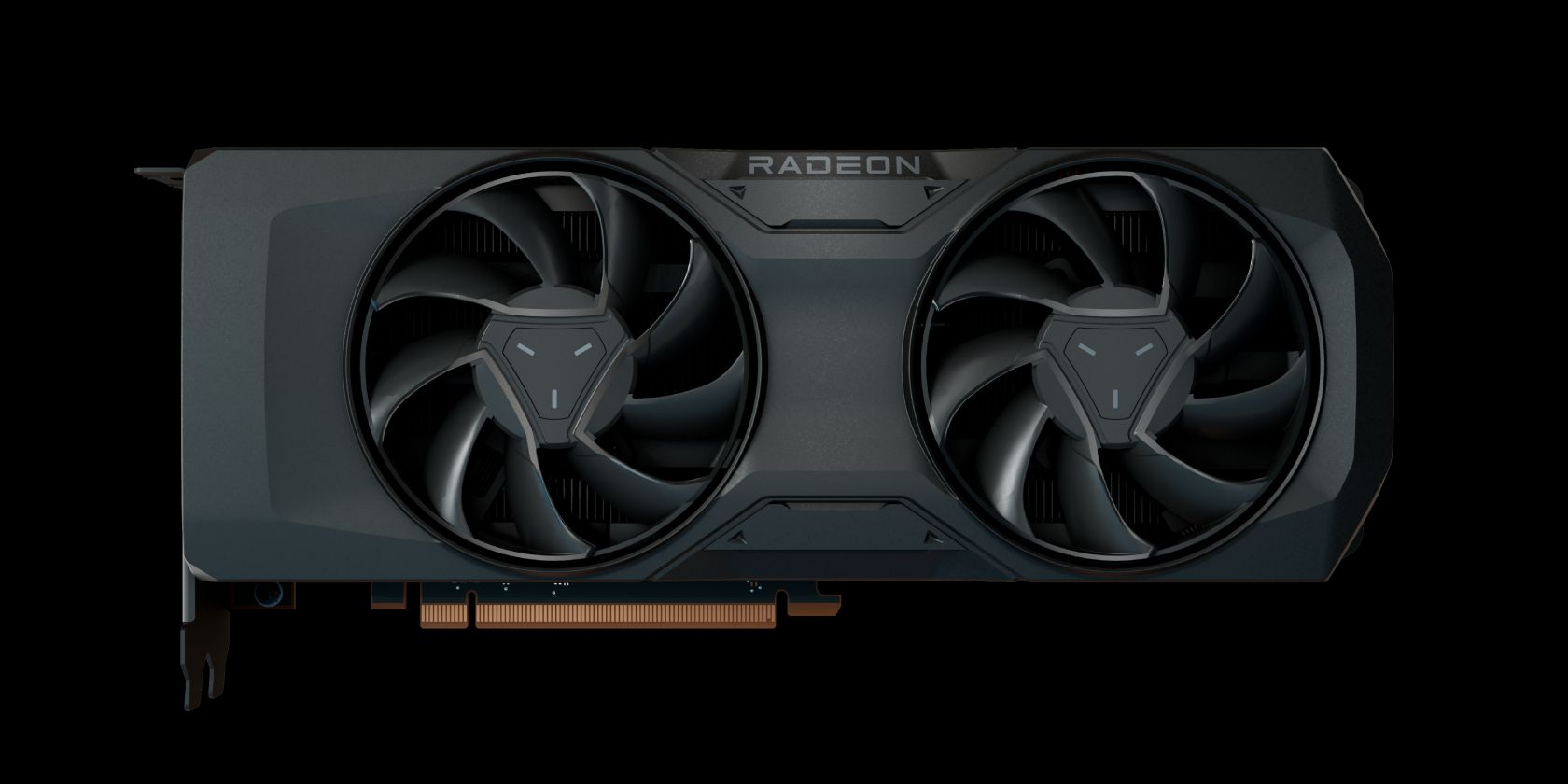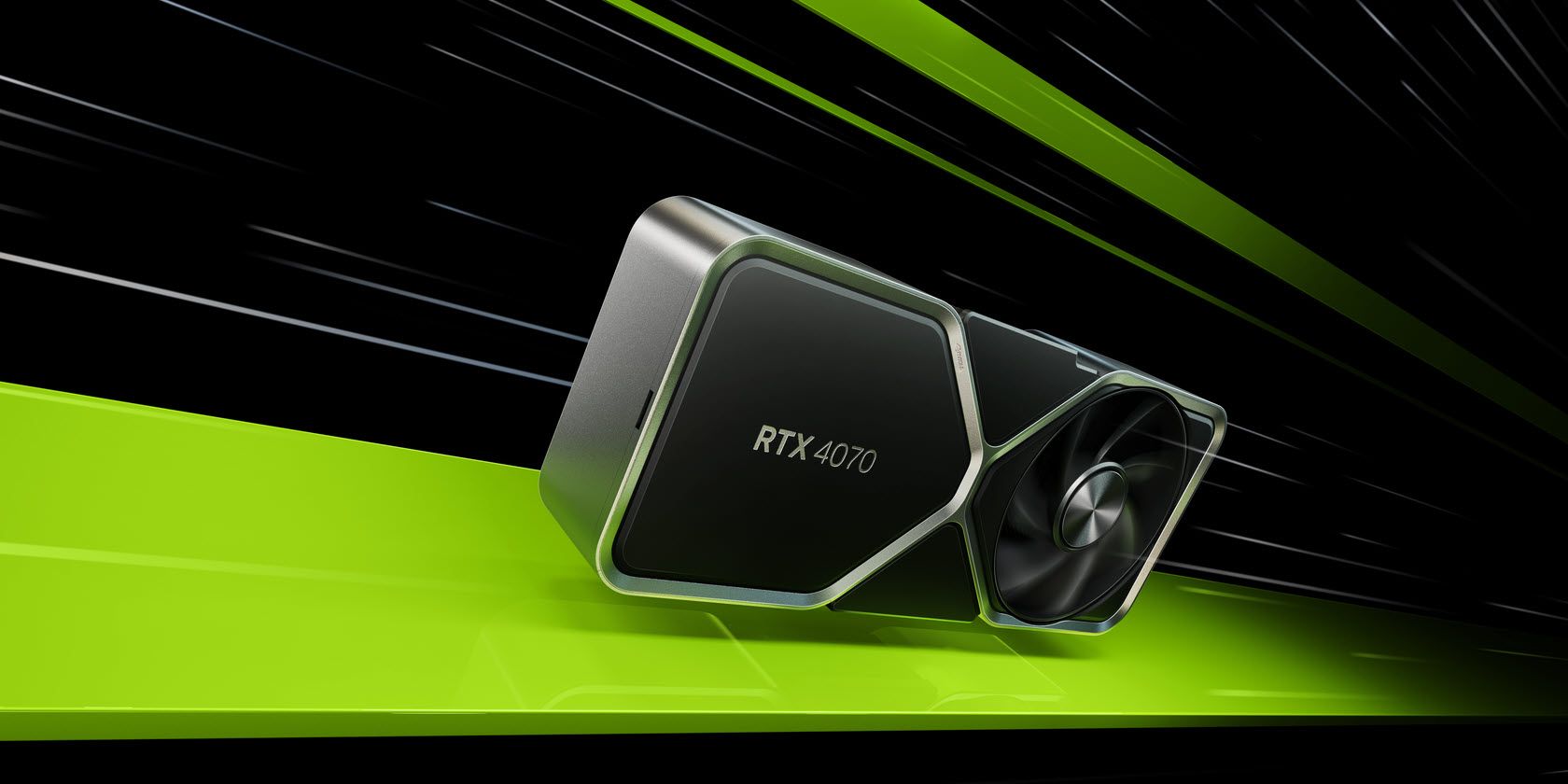Key Takeaways
- Nvidia's RTX 4060 Ti 16GB suffers from limited performance improvements, restrained memory capacity, and high pricing.
- The 16GB variant utilizes a clamshell configuration to accommodate additional VRAM, but its 128-bit memory subsystem compromises performance.
- Alternatives such as AMD Radeon RX 7800 XT and RX 6800 offer better price-to-performance ratios and outperform the RTX 4060 Ti in rasterization performance.
Nvidia got off to a pretty rocky start with the launch of its mid-range RTX 40-Series GPUs. Both the RTX 4060 and 4060 Ti deliver marginal performance improvements over their previous-gen counterparts while also suffering from a restrained memory capacity and absolute bandwidth.
To make matters worse, the company released a 16GB variant of the RTX 4060 Ti with the same underlying specifications as the 8GB model but at a steep $100 price premium. Given the atrocious pricing structure for Nvidia's current-gen GPU lineup, here are three alternatives that you might prefer buying instead of the RTX 4060 Ti 16GB.
Nvidia RTX 4060 Ti 16GB: Specifications and Overview
Before delving into our RTX 4060 Ti 16GB GPU alternatives list, let's look at the specs to determine why this graphics card is such a poor contender in terms of performance and overall value.
Specification | Nvidia RTX 4060 Ti 16GB |
|---|---|
GPU | AD106 |
Manufacturing Process | TSMC 5nm |
CUDA Cores | 4,352 |
Texture Units | 136 |
RT Cores | 34 |
Tensor Cores | 136 |
Boost Clock | 2,535MHz |
Memory | 16GB GDDR6 |
Memory Bus Width | 128-bit |
Memory Speed | 18 Gbps |
Memory Bandwidth | 288GB/s |
TDP | 165W |
MSRP | $500 |
Similar to the RTX 4060 Ti 8GB, the 16GB variant is essentially a trimmed-down AD106 GPU (as seen previously in Nvidia's RTX 4070 Mobile) based on the Ada Lovelace microarchitecture and built using TSMC's N5 process node. It boasts a maximum of 4,352 CUDA Cores, 34 SMs, 136 Tensor Cores, 34 RT Cores, 136 TMUs, 48 ROPs, and an advertised Boost Clock of 2,535MHz respectively.
Despite retaining the same core specifications as its 8GB sibling on an identical 128-bit memory interface, the RTX 4060 Ti 16GB variant benefits from an additional 8GB VRAM by utilizing a clamshell configuration. For those uninitiated, GDDR6 memory chips require a 32-bit controller, and with a narrower 128-bit bus, only four of these chips can be accommodated.
Since GDDR6 chips are usually available in capacities ranging from 1GB to 2GB, the base model has been equipped with four double-density 2GB memory chips to facilitate an 8GB frame buffer. Meanwhile, the clamshell arrangement on Nvidia's GeForce RTX 4060 Ti 16GB enables two memory modules to share a single 32-bit channel by positioning a total of eight GDDR6 chips on both sides of the PCB (Printed Circuit Board).
Owing to these adjustments, the 16GB variant ships with a TDP of 165W, making it slightly less efficient than the 8GB model in gaming and other productivity-focused workloads. Regardless, both GPUs take advantage of all the latest and greatest features associated with Nvidia's Ada Lovelace architecture, including the much-touted DLSS 3 Frame Generation technology, AV1 encoding and decoding, RTX Video Super Resolution, Reflex, and more.
Now, one of the glaring issues that discouraged most users from upgrading to the RTX 4060 Ti is its measly 8GB frame buffer. In an era where modern AAA titles typically consume more than 8GB of VRAM, even at 1080p Ultra settings (along with advanced ray tracing effects), mainstream $400 GPUs should arrive with at least 12GB of VRAM—16GB being the gold standard.
Although Nvidia tried to mitigate this limitation by launching a 16GB variant of the RTX 4060 Ti, the performance potential of this graphics card is somewhat affected by an already compromised 128-bit memory subsystem. Even the RTX 3060 Ti, a mid-range $400 GPU released way back in 2020, shipped with 8GB of VRAM on a much wider 256-bit memory bus—not to mention the substantial improvements to shader count and raw bandwidth.
As is evident from the benchmarking results, the RTX 4060 Ti 16GB offers a modest 3-4% improvement to average FPS over the 8GB model in the vast majority of AAA games. However, the augmented VRAM capacity can certainly help boost the 1% and 0.1% lows by as much as 30%, at 1440p, in memory-intensive titles such as The Last of Us Part I, The Callisto Protocol, and Star Wars Jedi: Survivor.
Perhaps the most contentious aspect of this GPU launch is the $100 price increase for an additional 8GB frame buffer. At $500, Nvidia's GeForce RTX 4060 Ti 16GB variant, even with its beefed-up L2 cache (32MB), represents the worst cost per frame among all other mid-range graphics cards released in the last couple of generations.
The 3 Best RTX 4060 Ti 16GB Alternatives You Should Consider
Given the lackluster performance of Nvidia's GeForce RTX 4060 Ti 16GB variant at resolutions above 1080p, here are three compelling GPU options that you should consider for your next upgrade, especially when gaming at 1440p or 4K.
1. AMD Radeon RX 7800 XT
Nearly nine months after the launch of its much acclaimed RX 7900 Series (RX 7900 XTX vs. RX 7900 XT), AMD unveiled the Radeon RX 7800 XT and 7700 XT as direct competitors to Nvidia's existing mid-range GPU lineup. Both variants stand favorably against the RTX 4060 Ti 16GB, with the RX 7800 XT outperforming the latter considerably.
The benchmarks show that the RX 7800 XT secures a 30-45% rasterization lead over the RTX 4060 Ti in recent AAA titles, all while maintaining a 16GB frame buffer on a 256-bit memory interface. Although Nvidia has the upper hand in its RT implementation, the performance difference is now closer than you might have expected in the first place.
What's even more surprising is that the RTX 4060 Ti 16GB received a $50 price discount right before the launch of these new Radeon graphics cards. This makes for an interesting comparison against AMD's current-gen offerings, as the 16GB variant is now priced similarly to the Radeon RX 7700 XT at $449.
Nevertheless, if you plan to buy a mainstream $500 graphics card capable of running most modern AAA titles at resolutions above 1080p, look no further than the RX 7800 XT. For a 10% price premium, you should be able to get your hands on a much more powerful GPU with rasterization performance that aligns closely with Nvidia's GeForce RTX 4070.
2. AMD Radeon RX 6800
Much like the RX 7800 XT, AMD's Radeon RX 6800 addresses many of the concerns surrounding the RTX 4060 Ti 16GB variant. Based on the RDNA 2 microarchitecture, this GPU has also been equipped with 16GB of GDDR6 memory on a 256-bit bus, producing an effective bandwidth of around 512GB/s.
Like before, the RX 6800 pulls off a comfortable lead over the RTX 4060 Ti 16GB by about 15-25% in rasterization performance while exhibiting a 5-8% deficit in games that implement advanced RT effects. However, when we compare the current pricing of both GPUs, the RX 6800, at $429, offers a better price-to-performance ratio than the competing RTX 4060 Ti 16GB variant on multiple occasions.
3. Nvidia GeForce RTX 4070
For those skeptical about investing in a new Radeon GPU, Nvidia's GeForce RTX 4070 can be considered a decent alternative, albeit at a slightly higher price point. At a discounted price of $549, this GPU packs 12GB of GDDR6 memory on a 192-bit memory bus, almost doubling the absolute bandwidth of the RTX 4060 Ti 16GB variant.
Although the RX 7800 XT takes the crown for the best value GPU under $600, Nvidia's recent pricing adjustments for its upper mid-range offering put it in a formidable position against the RTX 4060 Ti 16GB. On average, the RTX 4070 is 30% faster than the 16GB variant, and in select titles, the performance gap can widen to as much as 45%, making it a better value option for an extra $100.
Specifications | Nvidia RTX 4060 Ti 16GB | Nvidia RTX 4070 | AMD RX 6800 | AMD RX 7800 XT |
|---|---|---|---|---|
GPU | AD106 | AD104 | Navi 21 | Navi 32 |
Architecture | Ada Lovelace | Ada Lovelace | RDNA 2 | RDNA 3 |
Process Node | TSMC N5 | TSMC N5 | TSMC 7nm | TSMC N5/N6 FinFET |
Transistor Count | 22.9 Billion | 35.8 Billion | 26.8 Billion | 28.1 Billion |
Die Size | 188 mm² | 294 mm² | 520 mm² | 346mm² |
CUs/SMs | 34 | 46 | 60 | 60 |
Tensor Cores/AI Accelerators | 136 | 184 | N/A | 120 |
RT Cores/Ray Accelerators | 34 | 46 | 60 | 60 |
Base Clock | 2,310MHz | 1,920MHz | 1,700MHz | 1,295MHz |
Boost Clock | 2,535MHz | 2,475MHz | 2,105MHz | 2,430MHz |
Memory Clock | 2,250MHz | 1,313MHz | 2,000MHz | 2,438MHz |
Memory Bandwidth | 18Gbps | 21Gbps | 16Gbps | 19.5Gbps |
Memory Capacity (VRAM) | 16GB GDDR6 | 12GB GDDR6X | 16GB GDDR6 | 16GB GDDR6 |
Bus Width | 128-bit | 192-bit | 256-bit | 256-bit |
Infinity/L2 Cache | 32MB | 36MB | 128MB | 64MB |
TMUs | 136 | 184 | 240 | 240 |
ROPs | 48 | 64 | 96 | 96 |
FP32 (Single Precision) Performance | 22.06 TFLOPS | 29.15 TFLOPS | 16.17 TFLOPS | 37.32 TFLOPS |
FP16 (Half Precision) Performance | 22.06 TFLOPS (1:1) | 29.15 TFLOPS (1:1) | 32.33 TFLOPS (2:1) | 74.65 TFLOPS (2:1) |
Memory Bandwidth | 288GB/s | 504GB/s | 512GB/s | 624GB/s |
TBP/TGP | 165W | 200W | 250W | 263W |
Current Pricing | $449 | $549 | $429 | $499 |
Another Nail in the Coffin
It's worth pondering why Nvidia made such limited improvements to the RTX 4060 Ti 16GB variant. Unlike the 8GB model, the RTX 4060 Ti 16GB could have been a decent choice for budget-oriented consumers if its pricing was adjusted down by a tier or two.
While Frame Generation is certainly impressive from a technical standpoint, the feature loses quite a bit of its appeal at 1080p due to the limited pixel count of a lower resolution. As it currently stands, the RTX 4060 Ti is burdened by an unreasonably high price tag, one that you can safely bypass.




